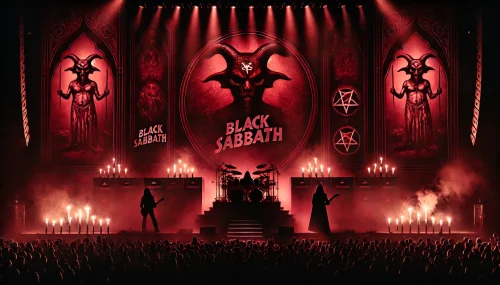In the pantheon of rock music, few bands have stirred as much intrigue and influence as Black Sabbath. Formed in 1968 in Birmingham, England, this quartet not only pioneered the heavy metal genre but also introduced a darker, more foreboding element to rock music that had never been so prominently explored before. Led by the enigmatic Ozzy Osbourne on vocals, Tony Iommi’s masterful guitar riffs, Geezer Butler’s deep bass tones, and Bill Ward’s thunderous drumming, Black Sabbath’s sound was revolutionary. Their music was a stark contrast to the peace-and-love ethos of the late 1960s, providing a soundtrack to the darker undercurrents of society.
From their eponymous debut album in 1970, Black Sabbath began weaving a tapestry of chilling themes and stories, drawing heavily on the occult and supernatural. Songs like “Black Sabbath” and “N.I.B.” were laden with references to dark figures and demonic pacts, encapsulating a fascination with the mystical and the macabre.
This thematic choice was not just a mere aesthetic layer; it resonated with the band’s image of rebellion and defiance, setting the stage for a legacy that would define not just their career but an entire subculture. The incorporation of occult imagery in their music and public persona created a mystique that intrigued fans and alarmed critics, cementing their status as icons of heavy metal and harbingers of a genre that thrived on the edges of society’s norms.
Origins and Early Influences

Black Sabbath’s story begins in the industrial heartland of Birmingham, England, a city steeped in the harsh realities of post-war economic struggle. The late 1960s were a period marked by significant social and economic turbulence. Birmingham, known for its bustling factories and foundries, offered a bleak backdrop for the birth of a band that would come to channel the city’s gritty reality into groundbreaking sounds. The members of Black Sabbath—Ozzy Osbourne, Tony Iommi, Geezer Butler, and Bill Ward—were products of this working-class environment, where the stark and sometimes oppressive industrial landscape would heavily influence their music.
Amidst this backdrop, the musical landscape was undergoing its own significant transformations. The late 1960s ushered in an era of musical experimentation and cultural revolution. The psychedelic sounds of bands like Pink Floyd and The Jimi Hendrix Experience were on the rise, promoting a culture of peace and love. However, in contrast to this psychedelic brightness, there was a growing interest in exploring darker themes. This duality in the cultural fabric of the time—a juxtaposition between the light and dark, the visible struggles and the underlying discontent—provided fertile ground for Black Sabbath’s thematic and auditory explorations.
Influenced by the blues, which had a profound impact on all the members, Black Sabbath began to meld this with the heavier and more ominous sounds that reflected their personal and environmental realities. Bands like Cream and Led Zeppelin were also merging blues with hard rock, but Sabbath took it a step further by infusing their music with themes of despair, dystopia, and diabolism, arguably a response to the bleakness they saw in their everyday lives.
A Form of Escapism
The occult and mysticism offered a form of escapism from the socio-economic pressures of Birmingham, but they also mirrored the band’s fascination with the darker aspects of human experience and historical lore, with Butler in particular taking a keen interest in black magic and supernatural phenomena.
As Black Sabbath continued to carve their niche, their sonic heaviness became a metaphor for the weight of industrial life and its existential overtones. Their groundbreaking debut album, self-titled “Black Sabbath,” released in 1970, captured this mood perfectly. The ominous tritone of “Black Sabbath,” a musical interval once banned in medieval church music and known as the “devil’s interval,” epitomized the band’s radical departure from the mainstream and heralded a new age of rock music that dared to confront rather than comfort.
The Occult Imagery in Music and Lyrics
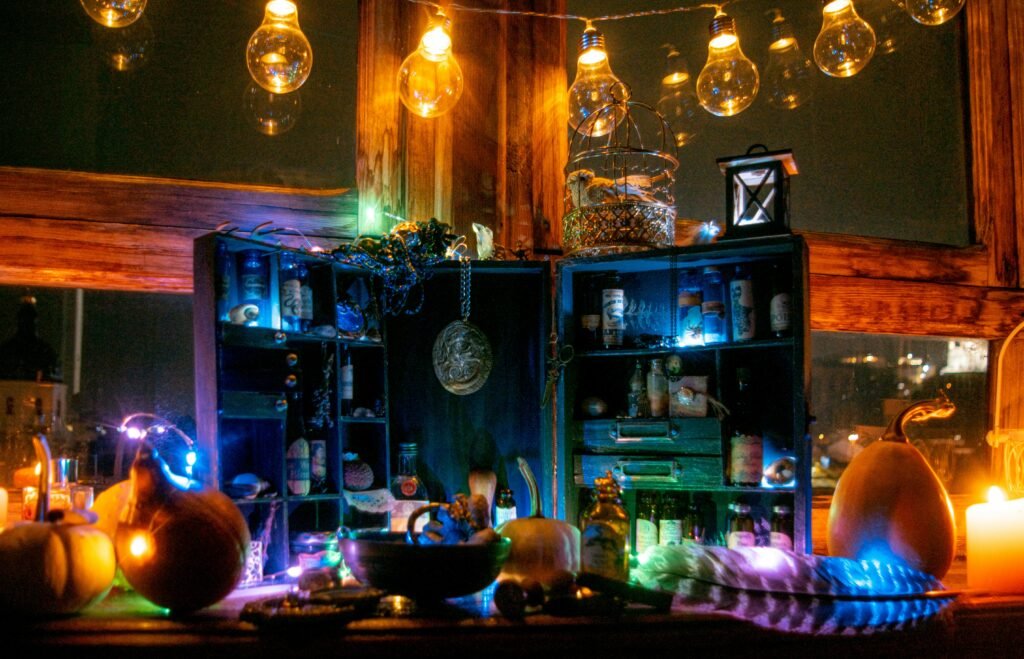
Black Sabbath’s use of occult imagery and dark lyrical themes was not merely superficial but a profound manifestation of the band’s artistic identity. This exploration begins significantly with their debut album, “Black Sabbath,” where the track of the same name arguably became the quintessential anthem of doom metal.
The song starts with the sound of a tolling bell and thunderstorm, setting a somber and eerie mood. The lyrics tell a story of an encounter with a dark figure who “points at me,” invoking themes of doom and supernatural presence. The use of the tritone interval, historically known as “diabolus in musica” (the devil in music), in Tony Iommi’s guitar riff, adds a musical layer to the thematic darkness, enhancing the song’s ominous feel.
“Black Sabbath” also introduced what would become staples in the depiction of the occult in rock music, with songs like “N.I.B.” This track, often misinterpreted as an abbreviation for “Nativity in Black,” actually refers to drummer Bill Ward’s beard described as a “nib.” However, the lyrics personify Lucifer as a fallen angel who falls in love with a human woman, offering a humanizing yet still darkly twisted perspective on the figure often synonymous with evil. The bass intro by Butler is distinct and sets a seductive tone that complements the lyrics, further enhancing the song’s dark allure.
Master of Reality
Moving to their third album, “Master of Reality,” released in 1971, the band deepened their exploration of these themes. Songs like “After Forever” introduce a complex dialogue about faith and spirituality, where the lyrics written by bassist Geezer Butler—a known explorer of religious themes—question the listener’s beliefs and confront the concept of an afterlife. This song, while still embedded within the framework of heavy metal, challenges the listener to consider the existential questions often shrouded in religious doctrine, using the language and imagery of the occult to frame these inquiries.
In these examples, Black Sabbath not only used lyrics to convey their fascination with the occult but also employed specific musical techniques that complemented their thematic choices. The slow, heavy riffs, the down-tuned guitars, and the foreboding drum patterns create a sound that mirrors the darkness of the lyrical content. This musical style not only defined the genre of heavy metal but also set a new standard for how music could explore and evoke the darker aspects of human experience and mythology.
The Marketing of Mystique
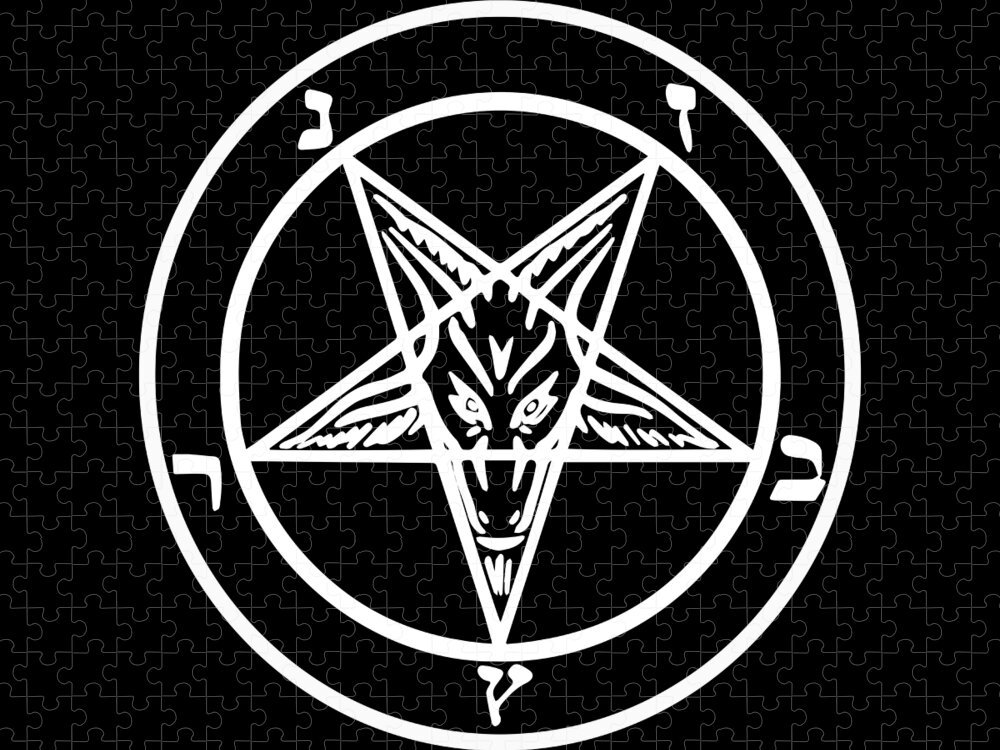
The marketing of Black Sabbath’s occult image was as pivotal to their success and cultural impact as their music itself. From album covers to stage designs, the band’s label and management crafted a visual and atmospheric presence that not only complemented their musical themes but also deepened the mystique surrounding them.
Album Artworks
One of the earliest and most striking examples of this is the cover of their debut album, “Black Sabbath.” The image is haunting: a mysterious figure clad in black stands in front of an old building amidst a gloomy and foggy landscape. This eerie figure, appearing almost witch-like, instantly conveys a sense of the supernatural and the occult, setting the tone even before the record is played. The cover art alone was enough to stir curiosity and unease, drawing listeners into the dark world the music promised to explore.
Following the success of their first album, the band’s management continued to leverage the occult image to great effect. The album cover for “Sabbath Bloody Sabbath” features a nightmarish scene with a man on a bed, surrounded by demons and other macabre imagery, including skulls and 666 numbers, all elements associated with the devil and the dark arts. This artwork, created by Drew Struzan, goes beyond mere branding, encapsulating the essence of the album’s themes and the band’s overarching aesthetic.
Stage Presence & Promotional Strategies
Stage setups for Black Sabbath’s concerts further amplified this mystique. Their performances often featured Gothic elements such as stone arches reminiscent of old churches or castles, coupled with innovative uses of light and shadow to create an ambiance of a dark, otherworldly assembly. The use of smoke machines, dim lighting, and occasionally projected images of occult symbols or eerie landscapes added layers of depth to their shows, making each performance not just a concert but an immersive experience.
Moreover, promotional strategies for their tours often played up the band’s connection to the occult. Posters and ads would frequently use Gothic-style fonts and imagery that evoked a sense of ancient and forbidden knowledge. The band’s name itself, Black Sabbath, a reference to the witch’s sabbath, the nocturnal gathering of witches, hinted at forbidden or secretive practices, and this was used to great effect in their promotional material to enhance the band’s allure and mystique.
Through these combined efforts, Black Sabbath’s label and management did not just market a band; they marketed a concept and a cultural icon. This strategic branding not only set them apart from other bands of the era but also created a distinctive identity that fans could rally around. Black Sabbath’s occult image was thus not merely a thematic element of their music but a comprehensive aesthetic and experiential strategy that played a crucial role in their enduring legacy and influence.
Public and Media Reaction
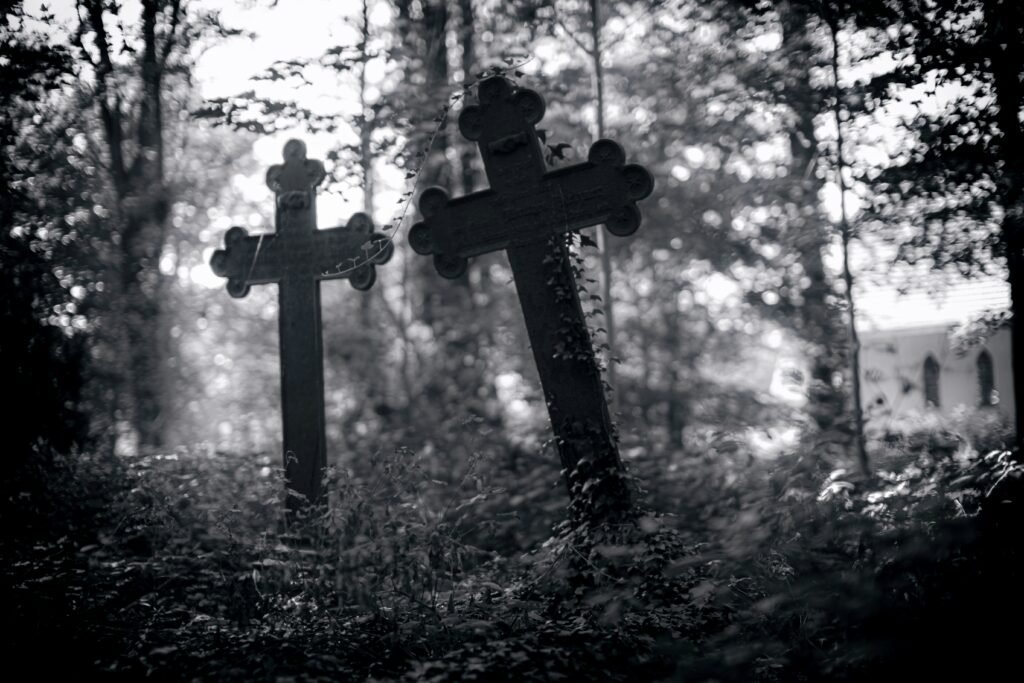
The reaction to Black Sabbath’s occult imagery was as intense and polarized as the themes they explored in their music. Fans, the media, and the wider public each responded in varying degrees of fascination, fear, and outright criticism, reflecting the complex cultural currents of the time.
For many fans, Black Sabbath’s dark and mystical themes offered a form of escapism from the mundane realities of everyday life. The band’s music and image resonated particularly well with the youth, who were often disillusioned with the socio-political environment of the 1970s. These young fans found a voice in Sabbath’s rebellious spirit and a sense of community among others who were similarly captivated by the band’s daring departure from conventional rock themes. The occult imagery added a layer of intrigue and depth that helped cultivate a dedicated fanbase, with many embracing the band’s symbols and themes as part of their own identity.
However, the media and certain segments of the public were less enthusiastic. Critics often derided Black Sabbath’s use of occult themes, labeling it as gimmicky or morally dubious. The band faced accusations of promoting satanism and negative behavior among youth, a charge that was not uncommon for rock bands of that era but seemed particularly acute for Sabbath due to their explicit references to the dark arts and supernatural. This controversy occasionally led to protests or calls for bans from conservative groups, particularly in more religious communities.
Moral Panic
The media portrayal of Black Sabbath during their peak occult phase was often sensationalized. Newspapers and magazines sometimes focused more on the band’s supposed connections to dark practices than on their music, contributing to a somewhat nefarious reputation. Stories were often anecdotal and exaggerated, such as rumored rituals at concerts or behind-the-scenes in the studio, which only fueled the public’s curiosity and concern.
Despite—or perhaps because of—these controversies, Black Sabbath’s popularity soared. The mystique surrounding their supposed real-life dalliances with the occult became a powerful part of their appeal. The band members themselves had varying reactions to this portrayal. While they occasionally played into these rumors for shock value and publicity, they also made efforts to clarify that their use of occult imagery was more about theatricality and thematic exploration than any actual cult practices.
Influence on Music and Culture
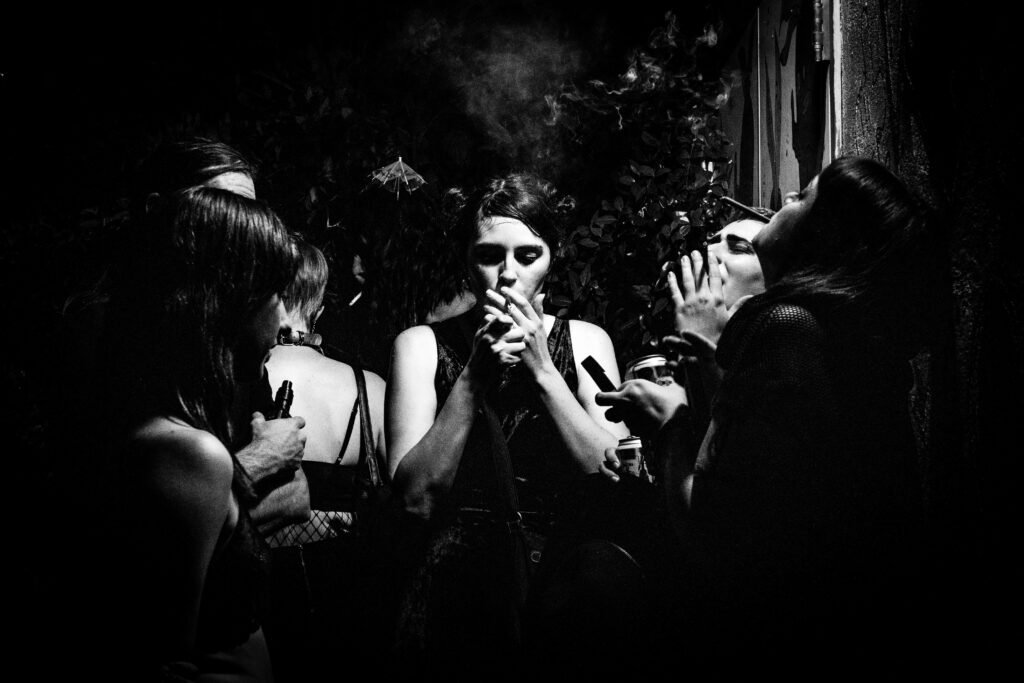
Black Sabbath’s bold integration of occult themes into their music and persona significantly influenced a range of musical genres, particularly metal and goth rock, and left an indelible mark on broader cultural landscapes including fashion, literature, and film.
In the realm of music, Black Sabbath’s pioneering sound and thematic choices laid the groundwork for the development of heavy metal. The band’s exploration of heavier, darker themes provided a blueprint that many metal bands would follow. Bands like Iron Maiden, Judas Priest, and later Metallica, drew direct inspiration from Sabbath’s tuning, riffing style, and thematic depth. The doom metal subgenre, characterized by slower tempos and a brooding atmosphere reminiscent of Black Sabbath’s early works, explicitly traces its roots back to the band. Bands like Candlemass and Saint Vitus carried forward this legacy, deepening the genre’s association with dark and foreboding narratives.
Pioneers of The Gothic Subculture
The impact of Black Sabbath extended beyond metal into the emergence of goth rock in the late 1970s and early 1980s. Bands like Bauhaus, The Cure, and Siouxsie and the Banshees adopted not only the dark aesthetics but also the introspective and often morose lyrical content that Sabbath had popularized. This integration of music with a darker, more reflective aesthetic influenced the tone and mood of the goth subculture, which embraced themes of existential dread, romanticism, and mysticism—themes that were staples in Black Sabbath’s repertoire.
The cultural influence of Black Sabbath’s occult themes is visible in the fashion world, where the gothic style incorporates the dark, mysterious, and sometimes macabre elements that the band popularized. This style is characterized by black clothing, crucifixes, and other symbols that have their roots in the imagery Black Sabbath used both on stage and in their album artwork. The fashion legacy of Sabbath’s occult imagery continues to resonate in contemporary designs seen in high fashion contexts and everyday streetwear, influencing designers like Rick Owens and Alexander McQueen.
In literature and film, the echoes of Black Sabbath’s themes can be seen in the horror and fantasy genres, where the exploration of the occult, the supernatural, and the macabre became more mainstream. The band’s influence can be discerned in the way modern horror films and books use music and imagery to create a setting or mood that reflects deeper, often darker themes. Films like “The Witch” and books such as “House of Leaves” carry the imprint of Sabbath’s thematic depth, utilizing similar tones and moods to evoke emotion and thought.
Moving Beyond the Occult
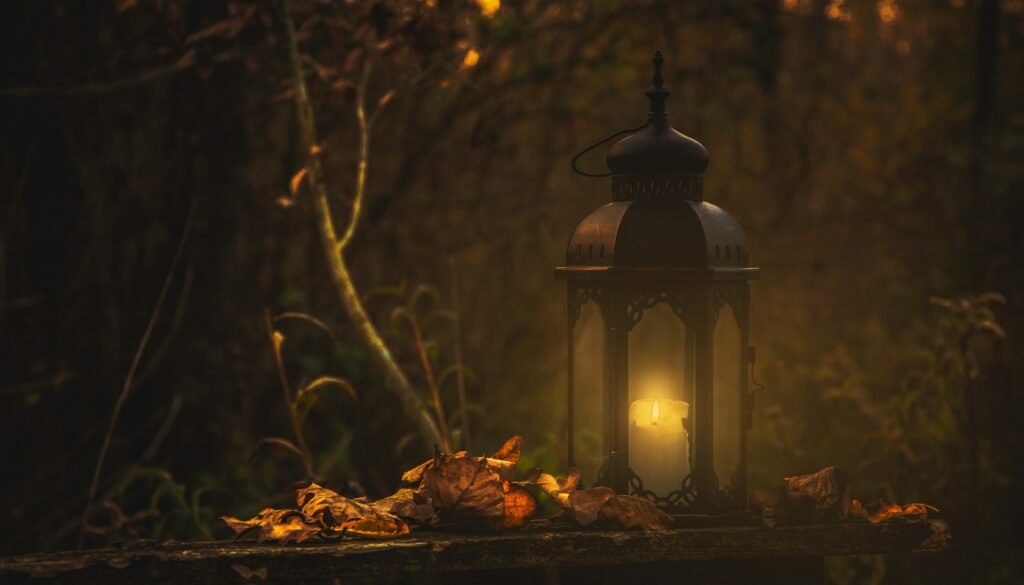
As Black Sabbath progressed through their career, their thematic focus began to evolve, gradually shifting away from the overt occult themes that had initially defined much of their early work. This transition was influenced by several factors, including changes in band membership, personal growth, and shifts in the cultural and musical landscape.
By the mid-1970s, after albums like “Sabbath Bloody Sabbath” and “Sabotage,” the band began to explore a broader range of lyrical themes and musical styles. The departure of Ozzy Osbourne in 1979 and the arrival of Ronnie James Dio marked a significant turning point in the band’s thematic focus. Dio brought a different lyrical approach to the band, infusing the music with more fantasy-oriented and mythological themes, as evidenced in albums like “Heaven and Hell” (1980) and “Mob Rules” (1981). These works still dealt with dark themes but moved away from the explicit references to the occult and black magic that had characterized their earlier albums.
Maturing Attitudes
The shift was also a reflection of the band members’ personal journeys and changing attitudes towards the occult. In the early days, Geezer Butler, who was responsible for much of the band’s early lyrics, was deeply interested in the occult. However, his fascination was more exploratory than devout, and as he matured, his interest in explicit occult themes waned. Butler and other band members, including Tony Iommi, often clarified in interviews that their use of occult imagery was more about creating a particular atmosphere and tapping into the rebel spirit of the times rather than any actual belief or practice.
This maturation can be seen in how the band members themselves spoke about their work. Ozzy Osbourne, for example, frequently dismissed claims that the band was involved in satanic practices, emphasizing that much of their image had been built up by the media and was theatrical in nature. Iommi, reflecting on the band’s history, noted that while they enjoyed playing with dark themes and imagery, it was never meant to be taken as a literal endorsement of the occult.
As the years passed, the cultural context in which Black Sabbath operated also shifted. The sensationalism surrounding the occult that marked the 1970s gave way to different social and musical concerns in the 1980s and beyond. This change in the cultural tide, combined with the personal growth of its members and shifts in the band lineup, naturally led to a new direction in their music and lyrics.
Impact & Legacy
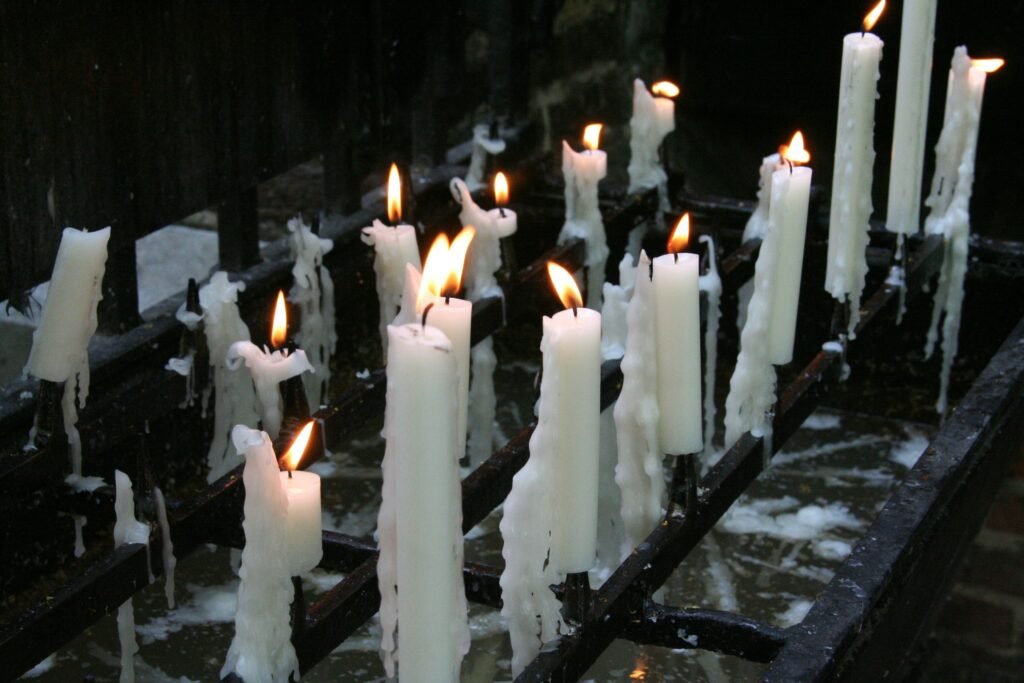
Black Sabbath’s alignment with occult imagery was both a product of its time and a bold artistic choice that set them apart in the musical landscape of the 1970s. Their decision to incorporate these themes stemmed from a combination of personal interests, particularly those of Geezer Butler, and a keen awareness of the shock value and intrigue that such imagery could generate. It was also a reflection of the broader cultural milieu, which was characterized by a fascination with the supernatural and the mysterious as a counterpoint to the prevailing social and political norms.
The band’s embrace of occult themes served as a powerful tool for expressing the darker, more introspective sides of human experience—fears, doubts, and the existential questions that are often avoided in popular discourse. In doing so, Black Sabbath tapped into a vein of cultural and musical expression that resonated deeply with their audience, offering an alternative narrative to the more typical rock themes of the day.
The implications of Black Sabbath’s use of occult imagery were profound. They challenged the boundaries of what was acceptable in mainstream music and influenced not just the genre of heavy metal, but also the visual and thematic elements of subsequent musical movements like goth rock. Their aesthetic and thematic choices helped to cultivate a musical and cultural space where exploration of taboo topics, ranging from the occult to mental illness, was not just accepted but celebrated.
Legacy
Reflecting on their legacy, Black Sabbath’s occult ties continue to influence contemporary music and culture. Their pioneering approach to thematic and musical exploration paved the way for artists to delve into intense and often dark themes with greater freedom and authenticity. Bands across various genres continue to draw inspiration from Sabbath’s boldness, both in sound and in substance, using music as a means to explore and express complex and challenging themes.
Moreover, the visual and cultural motifs that Black Sabbath popularized have transcended music, influencing fashion, film, and literature, and continuing to resonate with new audiences. Their legacy is evident in the enduring popularity of dark, mystical aesthetics and themes that challenge societal norms and probe the depths of the human psyche.
